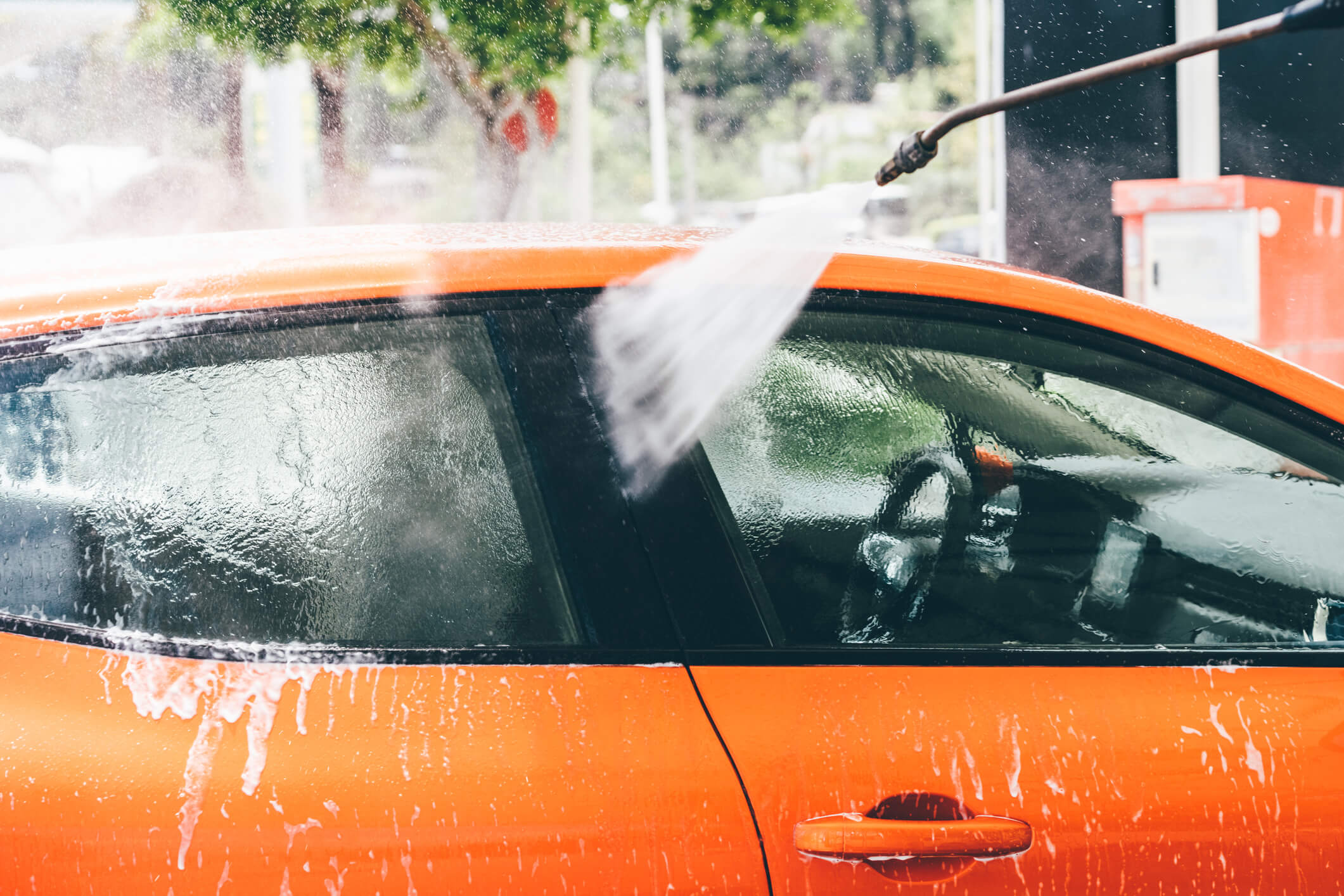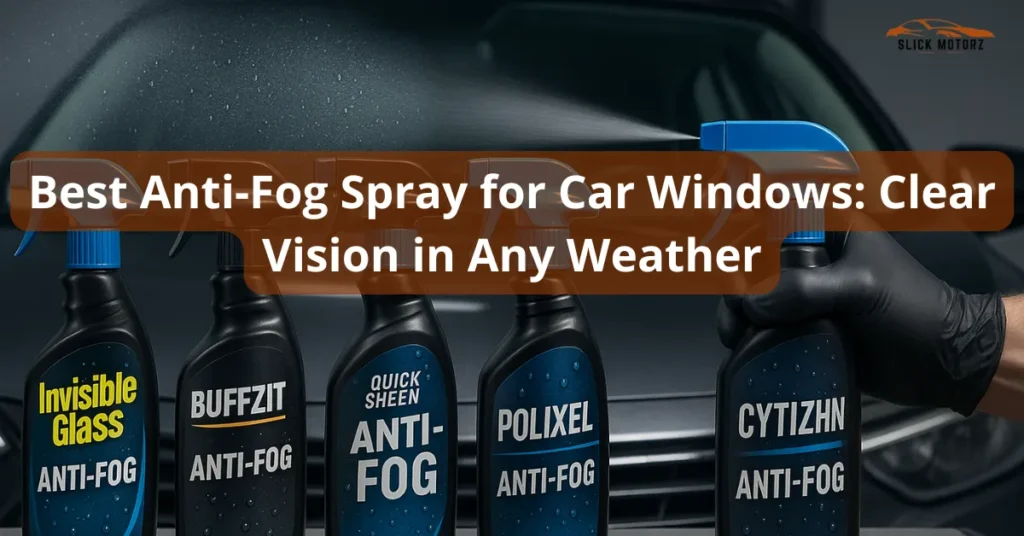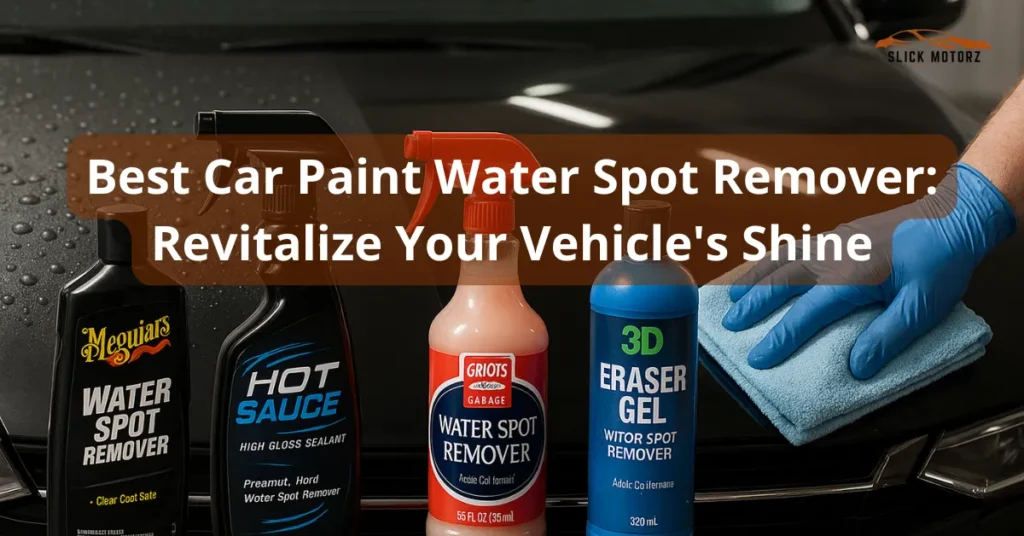Have you ever paused to consider the environmental impact of car detailing? As you strive to keep your vehicle gleaming and spotless, it’s crucial to understand the hidden costs to our planet.
You might be surprised to learn that the processes and products involved in detailing can have significant ecological consequences. By diving into this topic, you’ll uncover essential information that can transform how you approach maintaining your car’s appearance, ensuring it’s not only clean but also environmentally friendly.
Your choices matter more than you might think. With insights that shed light on sustainable practices, you can make a difference. Keep reading to find out how you can balance aesthetics and eco-consciousness, making informed decisions that benefit both your car and the environment.

Credit: sundancewash.com
Car Detailing Process
Car detailing is much more than just a thorough cleaning of your vehicle. It’s a meticulous process that can significantly impact the environment. As you dive into the world of car detailing, understanding the techniques and materials used is crucial. This knowledge not only helps you make eco-friendly choices but also ensures your car looks its best while minimizing environmental harm.
Common Techniques
Car detailing involves several techniques, each with its unique environmental footprint. Hand washing, steam cleaning, and using waterless wash solutions are popular methods. Hand washing allows for precise cleaning but can consume large amounts of water. Steam cleaning uses heat and steam to lift dirt, reducing water usage significantly. Waterless wash solutions are gaining popularity for their minimal water consumption; they use chemical formulations to clean your car without rinsing.
Think about your last car wash. Did you notice how much water you used? It’s surprising how quickly it adds up. Opting for steam or waterless options can drastically reduce your water footprint. How much water could you save by choosing a more sustainable method?
Materials And Products Used
The products used in car detailing can have varying environmental impacts. Traditional products often contain harsh chemicals that can damage the ecosystem if not disposed of properly. Eco-friendly alternatives are now widely available, offering biodegradable and non-toxic solutions. These products clean effectively without posing a risk to the environment.
Next time you purchase detailing products, check the labels for eco-friendly certifications. It’s empowering to know that you are making a choice that benefits both your car and the planet. Have you considered what chemicals might be lingering after your car detailing? Switching to green products might be the change you need.
Additionally, microfiber towels are a staple in car detailing, known for their efficiency and reusability. Unlike paper towels, they can be washed and reused multiple times, reducing waste. Investing in quality microfiber towels not only saves you money in the long run but also supports a cleaner environment.
As you explore these options, remember that small changes can lead to significant impacts. How can you adjust your car detailing routine to be more environmentally friendly? Start with one product or technique at a time, and you’ll be surprised at the difference it makes.
Chemical Usage In Detailing
Car detailing often involves various chemicals. These chemicals help in cleaning and protecting vehicles. They enhance the appearance and extend the lifespan of cars. But their usage has environmental impacts. Understanding these chemicals is crucial. It helps in making informed choices.
Types Of Chemicals
Detailing products include cleaners, polishes, and waxes. Cleaners remove dirt and grime. Polishes enhance shine by smoothing surfaces. Waxes protect against elements like rain and sun.
Some chemicals are biodegradable. These break down naturally without harming the environment. Others contain harsh ingredients. These can damage ecosystems if not managed properly.
Potential Hazards
Some detailing chemicals release volatile organic compounds. These compounds can harm air quality. They may contribute to respiratory issues. Water systems can also suffer. Runoff from chemicals can pollute rivers and lakes.
Improper disposal of these chemicals poses risks. They can harm aquatic life and disrupt natural habitats. Choosing eco-friendly products helps reduce these risks.
Water Consumption Issues
Car detailing can significantly impact water resources, often using gallons of water per session. This excessive consumption stresses local water supplies and can contribute to environmental degradation. Reducing water usage in car care is crucial for sustainability and environmental health.
Car detailing can be a fantastic way to keep your vehicle looking fresh and polished. Yet, have you ever paused to consider how much water is used in the process? Water consumption during car detailing is a significant environmental concern. Most traditional methods employ large quantities of water, which might surprise you. It’s essential to recognize these issues and explore efficient water practices to reduce your environmental footprint.
Average Water Usage
The amount of water used in conventional car detailing can be staggering. On average, a single car wash can consume anywhere from 30 to 50 gallons of water. That’s almost as much as the daily water usage for an entire household! Imagine the impact if you wash your car every week. This extensive water usage not only strains local water supplies but can also contribute to pollution when mixed with chemicals. So, what can you do to reduce this water wastage? Are there practices that consume less water while still ensuring your car looks its best?
Efficient Water Practices
One effective method is using waterless car wash solutions. These products allow you to clean your vehicle with minimal water, sometimes just a few ounces. They are specially formulated to lift dirt and grime without needing to rinse. This approach can save gallons of water each time you detail your car. Another option is investing in high-pressure washing systems. These systems use less water by spraying it at a higher velocity, effectively cleaning your car with fewer resources. Consider employing a rainwater collection system. You can use collected rainwater for car washing, reducing dependency on municipal water supplies. It’s a practical way to leverage natural resources and decrease your environmental impact. Are you ready to make a change? With these efficient practices, you can enjoy car detailing while being mindful of your water consumption.
Air Pollution Concerns
Car detailing is more than just making vehicles shine. It has a hidden side. Air pollution is a significant concern in this industry. Many products used in detailing release harmful substances into the air. These emissions can affect air quality and health. Understanding these impacts is essential for making informed choices.
Emissions From Products
Many car detailing products emit volatile organic compounds (VOCs). VOCs are chemicals that easily become vapors or gases. Common sources include cleaning sprays, waxes, and polishes. These emissions can be harmful both indoors and outdoors. They contribute to smog and can cause respiratory issues. The chemicals linger in the air long after application. Consider using products labeled as low-VOC or eco-friendly.
Impact On Air Quality
Air quality suffers from frequent car detailing activities. The release of VOCs contributes to air pollution. This can lead to environmental and health problems. Poor air quality affects everyone, especially in urban areas. It can exacerbate asthma and allergies. Choosing greener products can help improve air quality. Reducing emissions is crucial for a healthier environment.
Waste Management Challenges
Car detailing poses significant waste management challenges due to the chemicals and water used. Improper disposal can harm the environment, affecting soil and water quality. Understanding these impacts helps in adopting eco-friendly practices to reduce pollution.
Car detailing, while essential for maintaining the look and longevity of your vehicle, can present significant waste management challenges. From the water used in washing to the chemicals in cleaning solutions, the impact on our environment is notable. It’s crucial to understand how you can manage waste effectively and reduce its generation during the detailing process.
Handling Waste Properly
Proper waste management starts with understanding what waste is being produced. Differentiate between hazardous and non-hazardous waste. Hazardous waste includes chemicals and oils, while non-hazardous waste comprises materials like paper towels and packaging. You can manage these wastes by ensuring they are disposed of correctly. Use designated disposal bins for hazardous materials. Consider collaborating with a local waste management service for safe disposal. Have you ever thought about where all the water from your car wash goes? It’s often mixed with detergents and dirt, which can harm the environment. Use water reclamation systems to clean and reuse water, minimizing waste and environmental impact.
Reducing Waste Generation
Reducing waste is not just about managing it; it’s about generating less in the first place. Opt for products that come with minimal packaging or that use recyclable materials. This small change can make a big difference in the amount of waste you produce. Have you tried using eco-friendly cleaning products? They are just as effective as traditional ones but are biodegradable and less harmful to the environment. Consider using microfiber towels instead of paper towels. They are reusable and reduce the waste generated by single-use products. Every little change contributes to a larger impact. Next time you detail your car, think about the waste you’re generating. Is there a way to do it better? By adopting mindful practices, you can enjoy a spotless car without compromising the environment.
Eco-friendly Alternatives
Car detailing can impact the environment in many ways. Traditional methods use chemicals and water, which may harm nature. But, there are eco-friendly alternatives. These options help keep your car clean without hurting the planet. Let’s explore some green choices for car detailing.
Green Products
Green products use natural ingredients. They are safer for the environment. These products break down quickly. This means less pollution. Look for labels that say “biodegradable” or “non-toxic.” They often work as well as regular products. Plus, they are gentle on your car’s paint. By choosing green products, you support a healthier planet.
Waterless Detailing Solutions
Waterless detailing solutions save water. They use special sprays. These sprays clean and shine without rinsing. Simply spray and wipe with a soft cloth. This method reduces water use. It also cuts down on waste. Waterless solutions are perfect for drought areas. They offer a convenient and eco-friendly choice for car owners.
Regulations And Compliance
Car detailing impacts the environment through water usage and chemical runoff. Strict regulations ensure the safe disposal of waste. Compliance helps protect ecosystems and water resources.
Understanding the regulations and compliance involved in car detailing is crucial for both business owners and consumers. It’s not just about keeping your vehicle shiny, but also about ensuring that the practices used are environmentally friendly. With growing awareness of environmental issues, adhering to regulations becomes a responsibility.
Environmental Standards
Environmental standards play a vital role in the car detailing industry. They ensure that the chemicals and materials used do not harm the environment. For example, many countries have strict guidelines on the disposal of wastewater, which often contains harmful substances from cleaning products. Are you aware of how your detailing shop manages its waste? Compliance with these standards not only protects the environment but also builds trust with customers. You can look for certifications or labels that indicate eco-friendly practices. These standards serve as a benchmark for detailing businesses to follow responsible practices.
Industry Best Practices
Adopting industry best practices is essential for minimizing environmental impact. These practices include using biodegradable cleaning products and waterless car wash solutions. Have you ever thought about how much water a traditional car wash uses? Switching to water-efficient methods can save thousands of gallons annually. Many detailing businesses are now opting for steam cleaning, which reduces water usage significantly. This is not only good for the planet but also offers a superior clean. As a consumer, choosing businesses that follow these practices supports sustainability efforts. Keeping informed about the latest technologies and methods in eco-friendly detailing can help you make better choices. Whether you are running a detailing business or getting your car detailed, staying compliant and adopting best practices makes a significant difference.

Credit: www.carwashqueentaunton.com
Consumer Awareness
Car detailing impacts the environment significantly. Water runoff carries chemicals into local waterways, harming aquatic life. Choose eco-friendly detailing products to reduce negative effects.
When it comes to car detailing, consumer awareness about the environmental impact plays a crucial role in promoting eco-friendly practices. As a car owner, you might not immediately think about how your car cleaning habits affect the environment. However, understanding the impact of your choices can help you make more sustainable decisions. By becoming more informed, you can contribute to a cleaner planet while keeping your vehicle in top shape.
Educating Customers
Educating yourself about the environmental impact of car detailing is the first step. Many car owners might not realize that traditional cleaning products can contain harmful chemicals. These can end up in waterways, affecting aquatic life and ecosystems. You can start by seeking information from reliable sources. Many detailing services now offer educational materials or workshops about eco-friendly practices. Understanding the difference between biodegradable and non-biodegradable products can make a significant difference. Consider asking your detailing service about their environmental practices. Are they using water-efficient methods or biodegradable soaps? Your questions can encourage more businesses to adopt sustainable practices.
Promoting Sustainable Choices
Promoting sustainable choices in car detailing is easier than you might think. Opt for services that prioritize environmentally friendly methods. Waterless car washes, for instance, can save gallons of water per wash. You can also choose to use eco-friendly cleaning products at home. These products are designed to minimize harmful environmental impacts, providing a safe alternative to traditional cleaners. Think about the impact of your regular detailing routine. Are there areas where you can reduce waste or conserve resources? Small changes in your habits can lead to a significant positive impact on the environment. Imagine if every car owner switched to sustainable detailing practices. The collective effort could lead to cleaner water, healthier ecosystems, and a greener planet. Are you ready to make a difference?

Credit: www.washmenow.ca
Frequently Asked Questions
How Does Car Detailing Affect The Environment?
Car detailing can impact the environment through water waste and chemical runoff. Some detailing products contain harmful chemicals. These can pollute water sources and harm aquatic life. Choosing eco-friendly detailing products and methods helps reduce this environmental impact significantly.
What Are Eco-Friendly Car Detailing Products?
Eco-friendly car detailing products are biodegradable and non-toxic. These products are designed to minimize environmental harm. They often contain natural ingredients. Using these products helps reduce chemical runoff and pollution. Look for labels indicating environmentally safe formulas when purchasing detailing products.
Can Waterless Car Detailing Help The Environment?
Yes, waterless car detailing conserves water and reduces runoff. It uses specialized spray products that clean without rinsing. This method minimizes water waste and chemical contamination. Waterless detailing is an eco-friendly alternative to traditional washing methods. It helps protect water resources while maintaining your car’s appearance.
Are There Sustainable Car Detailing Practices?
Yes, sustainable practices include using eco-friendly products and water conservation. Opt for waterless detailing methods or use less water. Proper disposal of waste and recycling materials also contributes. Regular maintenance reduces the need for frequent detailing, further minimizing environmental impact.
Adopt these practices to make car detailing more sustainable.
Conclusion
Car detailing affects our environment. It’s crucial to be aware. Choose eco-friendly products. Support water conservation efforts. Small changes can make a big difference. Protecting nature benefits everyone. Educate yourself and others on safe practices. Drive a cleaner, greener future.
Every action counts. Balance vehicle care with environmental responsibility. Sustainable choices improve our world. Stay informed and proactive. Your efforts help preserve nature. Make thoughtful decisions today. Ensure a healthier planet for tomorrow. Together, we can make a positive impact.
Be part of the solution. Live green, drive clean.















